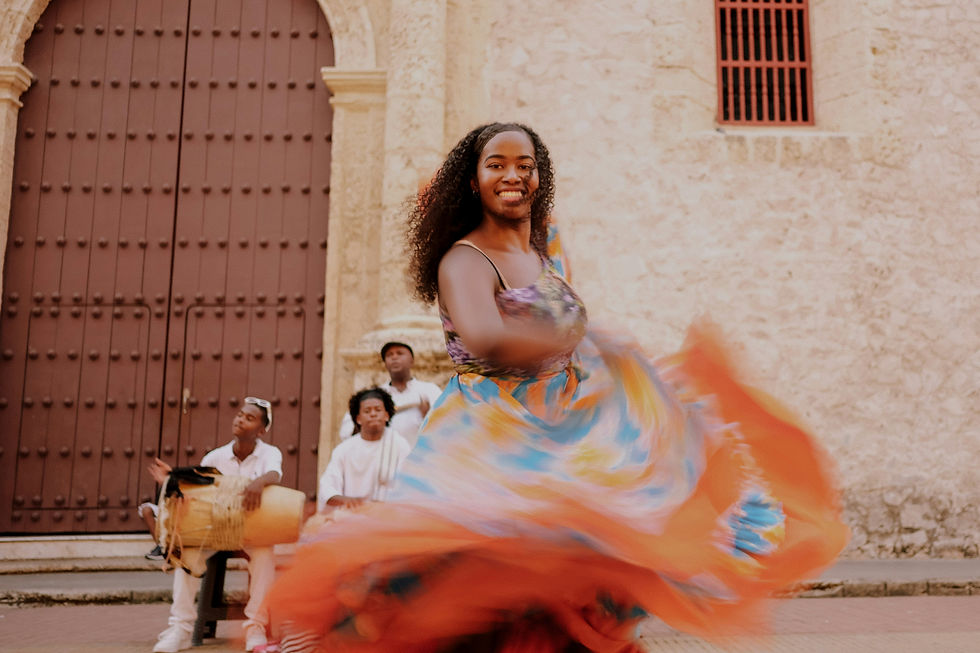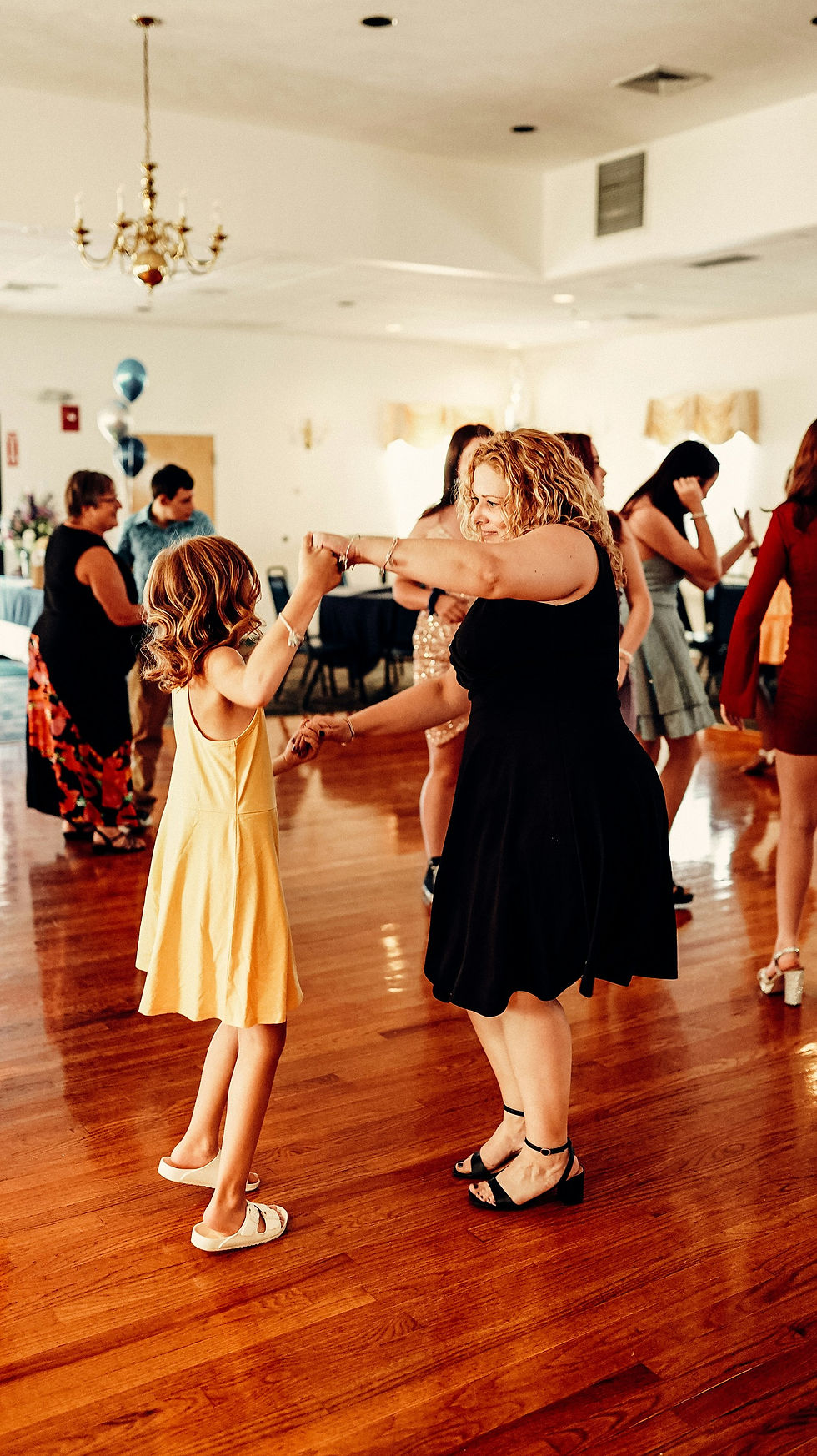The Hidden Health Benefits of Social Dancing
- Los Encantos

- Aug 8
- 3 min read
When you think of social dancing, you probably imagine music, friends, and fun nights out. What you might not realize is that every twirl, spin, and step is also giving your body and mind a powerful health boost. Let’s uncover the hidden ways dancing is making you healthier while you are having the time of your life.
A Full-Body Workout That Feels Like Play
Social dancing is exercise in disguise. You burn calories, strengthen muscles, and improve flexibility without setting foot in a gym. Unlike repetitive workouts, dancing constantly changes movements and engages different muscle groups. This variety keeps your body challenged and your mind stimulated.
One study found that dancing can burn as many calories as jogging, depending on the style and intensity (Krishnan et al., 2015).

Boosts Brain Power
It is not just your legs getting a workout. Dancing improves memory, coordination, and multitasking skills. The need to remember steps, respond to your partner, and move in rhythm strengthens neural connections in your brain.
Older adults who dance regularly show improved cognitive flexibility and a lower risk of dementia (Verghese et al., 2003).

Strengthens Your Heart
Latin social dance styles such as salsa and bachata get your heart rate up in a way that benefits cardiovascular health. Regular dancing has been linked to reduced risk of heart disease and improved aerobic capacity (Keogh & Kilding, 2006).
The best part is that you hardly notice you are doing cardio because you are having so much fun.

Improves Balance and Coordination
Every spin, step, and weight shift trains your balance and coordination. This is especially important as we age, because maintaining strong balance reduces the risk of falls and injuries (Kattenstroth et al., 2013).
Even if you have never danced before, your stability will improve naturally with practice.
A Natural Mood-Lifter
Social dancing can instantly boost your mood. The combination of movement, music, and social connection stimulates the release of endorphins and reduces stress (Koch et al., 2019). Many dancers report feeling lighter, happier, and more confident after a single evening on the floor.

Builds Social Connection
Human beings thrive on connection, and dancing is one of the easiest ways to meet new people. Social dancing promotes trust, empathy, and shared joy, which can reduce feelings of isolation (Quiroga Murcia et al., 2010).
These social bonds are just as important for health as diet and exercise.
Ready to Dance Your Way to Better Health?
The hidden health benefits of social dancing are too good to ignore. Whether you are looking for a new hobby, a way to meet people, or a fun path to better fitness, the dance floor is calling. All you have to do is say yes.

References
Kattenstroth, J.-C., Kalisch, T., Holt, S., Tegenthoff, M., & Dinse, H. R. (2013). Six months of dance intervention enhances postural, sensorimotor, and cognitive performance in elderly without affecting cardio-respiratory functions. Frontiers in Aging Neuroscience, 5, Article 5. https://doi.org/10.3389/fnagi.2013.00005
Keogh, J. W. L., & Kilding, A. E. (2006). Physical benefits of dancing for healthy older adults: A review. Journal of Aging and Physical Activity, 14(4), 411–428. https://doi.org/10.1123/japa.14.4.411
Koch, S. C., Kunz, T., Lykou, S., & Cruz, R. (2019). Effects of dance movement therapy and dance on health-related psychological outcomes: A meta-analysis update. Frontiers in Psychology, 10, 1806. https://doi.org/10.3389/fpsyg.2019.01806
Krishnan, S., Tokar, T. N., Boylan, M. M., Griffin, K., Feng, D., McMurry, L., & Cooper, J. A. (2015). Zumba® dance improves health in overweight/obese or type 2 diabetic women. American Journal of Health Behavior, 39(1), 109–120. https://doi.org/10.5993/AJHB.39.1.12
Quiroga Murcia, J. A., Kreutz, G., Clift, S., & Bongard, S. (2010). Shall we dance? An exploration of the perceived benefits of dancing on well-being. Arts & Health, 2(2), 149–163. https://doi.org/10.1080/17533010903488582
Verghese, J., Lipton, R. B., Katz, M. J., Hall, C. B., Derby, C. A., Kuslansky, G., Ambrose, A. F., Sliwinski, M., & Buschke, H. (2003). Leisure activities and the risk of dementia in the elderly. New England Journal of Medicine, 348(25), 2508–2516. https://doi.org/10.1056/NEJMoa022252

